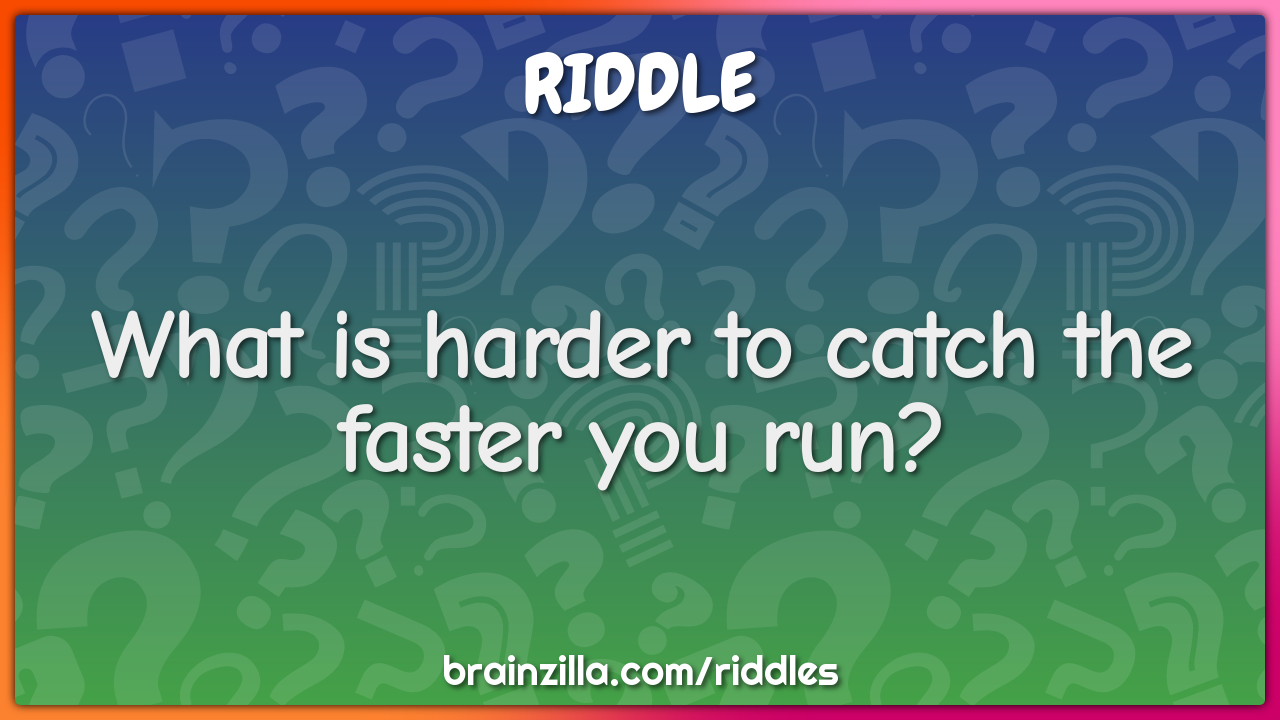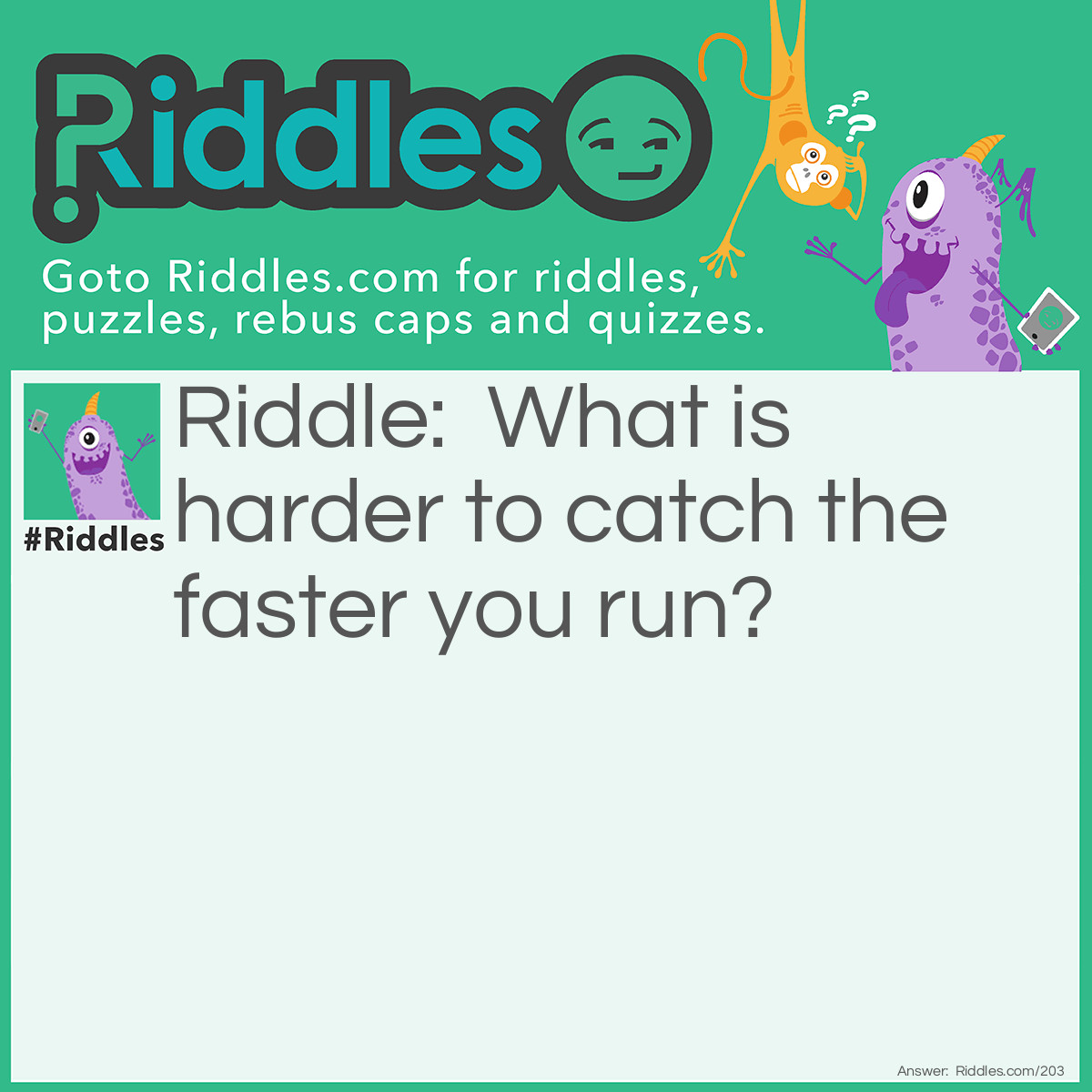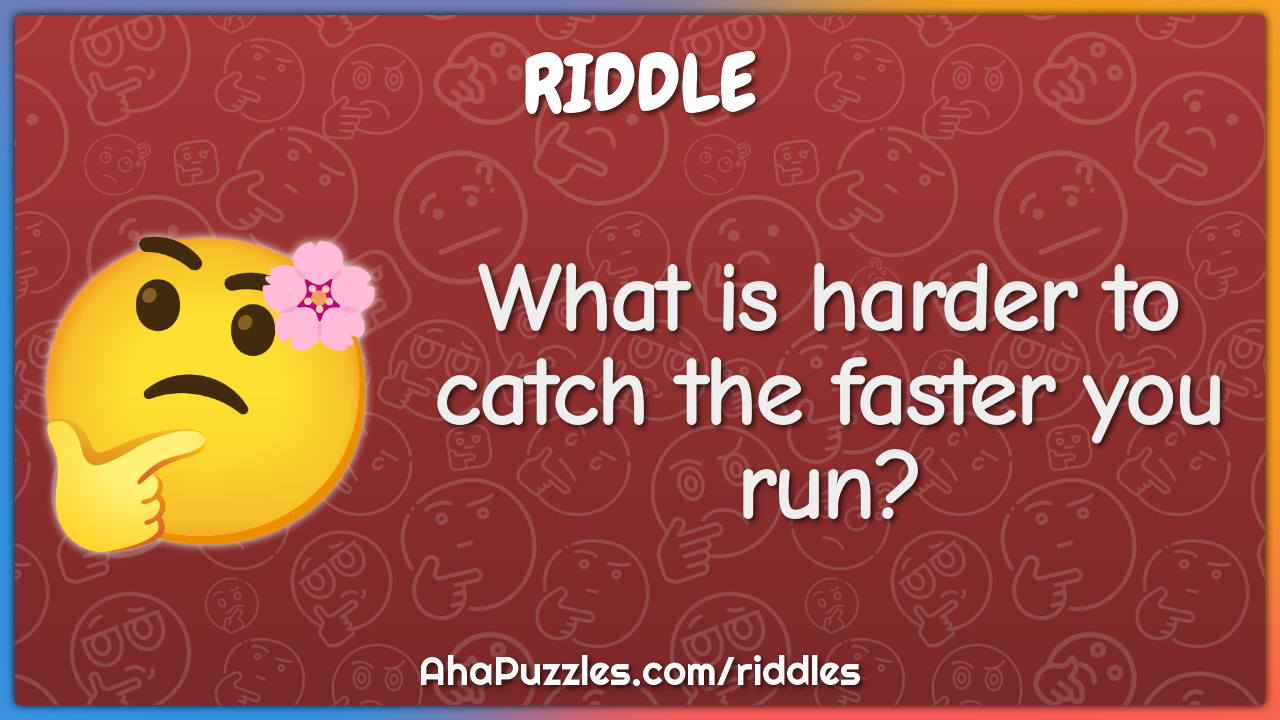What is harder to catch faster you run – Delving into the fascinating world of catching while running, this article explores the intriguing inverse relationship between these two actions. The faster you run, the harder it becomes to catch something, and this phenomenon is influenced by a multitude of factors, including momentum, inertia, reaction time, and perception.
Momentum, the force that keeps an object moving, plays a crucial role in this dynamic. As you run faster, the momentum you gain makes it more challenging to change direction or stop suddenly, which can hinder your ability to catch something.
Difficulty of Catching and Running

The faster you run, the harder it becomes to catch something. This is because the faster you move, the less time you have to react to the object’s movement. As a result, you are less likely to be able to catch the object before it gets away.
There are several factors that contribute to this difficulty. First, the faster you run, the more difficult it is to see the object you are trying to catch. This is because the object will be moving more quickly, and your eyes will have to work harder to keep up.
Second, the faster you run, the more difficult it is to coordinate your movements. This is because your body will be moving more quickly, and you will have to be more precise in your movements in order to catch the object.
There’s a fascinating article in the NYT discussing the recent release of a new navigation system that offers real-time updates and personalized recommendations. The system, called One , is designed to make driving easier and more efficient.
Examples
- A baseball player trying to catch a fly ball
- A football player trying to catch a pass
- A soccer player trying to catch a header
Momentum and Inertia: What Is Harder To Catch Faster You Run

Momentum refers to the mass of an object in motion, while inertia is the resistance of an object to any change in its motion. Both play a significant role in making it harder to catch something while running.As you run, your body has a certain amount of momentum.
This momentum makes it difficult to change direction or stop suddenly, which is why it can be harder to catch something while running. If you try to catch something while running, the momentum of your body will carry you past the object, making it more difficult to grab.Inertia also affects your ability to catch something while running.
Inertia is the resistance of an object to any change in its motion. This means that it takes more force to stop a moving object than it does to start it moving. When you are running, your body has a certain amount of inertia, which makes it more difficult to stop suddenly.
This can make it harder to catch something while running, as you need to be able to stop your body’s motion in order to catch the object.
Real-Life Examples
There are many real-life examples that demonstrate the impact of momentum and inertia. For example, it is harder to stop a car that is going fast than it is to stop a car that is going slow. This is because the faster car has more momentum, and therefore more inertia.
Similarly, it is harder to catch a ball that is thrown hard than it is to catch a ball that is thrown softly. This is because the harder ball has more momentum, and therefore more inertia.
Reaction Time and Perception
Reaction time and perception play a crucial role in catching something while running. Reaction time refers to the time it takes for an individual to respond to a stimulus, while perception involves the interpretation of sensory information.
Perceptual Narrowing
When running, perceptual narrowing occurs, which is a phenomenon where attention is focused on a narrow range of stimuli directly relevant to the task at hand. This means that the ability to perceive and react to objects outside of this narrow focus is diminished.
For example, a runner may be so focused on catching a ball that they fail to notice an obstacle in their path.
Strategies for Effective Catching
Catching something while running requires a combination of skill, anticipation, and technique. To improve your chances of making a successful catch, consider the following strategies:
Anticipating the Movement
The key to effective catching is to anticipate the movement of the object. This involves observing its trajectory, speed, and direction. By predicting where the object will land, you can position yourself accordingly.
Positioning and Running
Once you’ve anticipated the object’s movement, adjust your running speed and direction to optimize your catching ability. Run at a pace that allows you to reach the object without overrunning it. If necessary, change direction slightly to intercept its path.
Catching Techniques, What is harder to catch faster you run
There are several techniques you can use to catch an object while running. One common method is to extend your arms and hands forward, palms facing up, and close them around the object as it approaches.
Another technique is to use your body to cushion the impact of the catch. For example, if you’re catching a ball, position your body slightly behind the ball and use your chest or stomach to absorb the force.
For those who have always dreamed of navigating the vast expanse of the digital realm, one providing sat navigation nyt mini is a must-have tool. With its cutting-edge technology, this revolutionary device empowers users to embark on online journeys with unparalleled ease and efficiency.
Physical and Cognitive Abilities
Effective catching while running requires a combination of physical and cognitive abilities. These include hand-eye coordination, balance, and spatial awareness. Let’s explore each of these abilities and how they contribute to the catching process.
Hand-Eye Coordination
Hand-eye coordination is the ability to use visual information to guide hand movements. It is crucial for catching because it allows the runner to track the ball’s trajectory and adjust their hand position accordingly. Good hand-eye coordination enables the runner to make quick and accurate adjustments to catch the ball cleanly.
Balance
Balance is essential for maintaining stability while running and catching. It allows the runner to maintain an upright posture and adjust their body position to reach the ball. Good balance helps prevent falls and ensures the runner can focus on catching the ball without losing their footing.
Spatial Awareness
Spatial awareness is the ability to understand the relationship between oneself and the surrounding environment. It is important for catching because it allows the runner to judge the distance and trajectory of the ball. Good spatial awareness enables the runner to anticipate the ball’s path and position themselves accordingly.
These physical and cognitive abilities can be developed and improved through practice and training. Regular practice of catching drills can help enhance hand-eye coordination, balance, and spatial awareness. Additionally, exercises such as balance training and spatial orientation exercises can specifically target these abilities.
Applications in Sports and Activities
The principles of catching while running are essential in various sports and activities, requiring athletes to master the coordination and timing to execute successful catches.In baseball, outfielders must track fly balls while running to the desired catching spot. They use peripheral vision to locate the ball, judge its trajectory, and adjust their stride to intercept it at the optimal point.In basketball, players need to catch passes while moving in different directions, often with defenders nearby.
They rely on anticipation, reaction time, and hand-eye coordination to secure the ball before it bounces or is intercepted.Soccer players utilize similar techniques to catch aerial passes. They must assess the ball’s flight path, anticipate its landing spot, and time their movement to catch it cleanly while maintaining balance and control.Understanding the difficulty of catching while running can enhance performance in these sports.
By practicing catching drills in various running scenarios, athletes can improve their coordination, reaction time, and overall catching ability, leading to greater success on the field.
Conclusion

In conclusion, catching while running is a complex skill that requires a combination of physical and cognitive abilities. Understanding the factors that make it harder to catch something as you run faster can help you develop strategies to improve your catching skills and enhance your performance in various sports and activities.
Answers to Common Questions
Why is it harder to catch something when you are running faster?
As you run faster, your momentum increases, making it more difficult to change direction or stop suddenly, which can hinder your ability to catch something.
How does momentum affect catching?
Momentum is the force that keeps an object moving. As you run faster, the momentum you gain makes it more challenging to change direction or stop suddenly, which can hinder your ability to catch something.
What is perceptual narrowing?
Perceptual narrowing is a phenomenon where your attention becomes focused on a specific object or task, making it more difficult to perceive and react to other objects in your environment.
